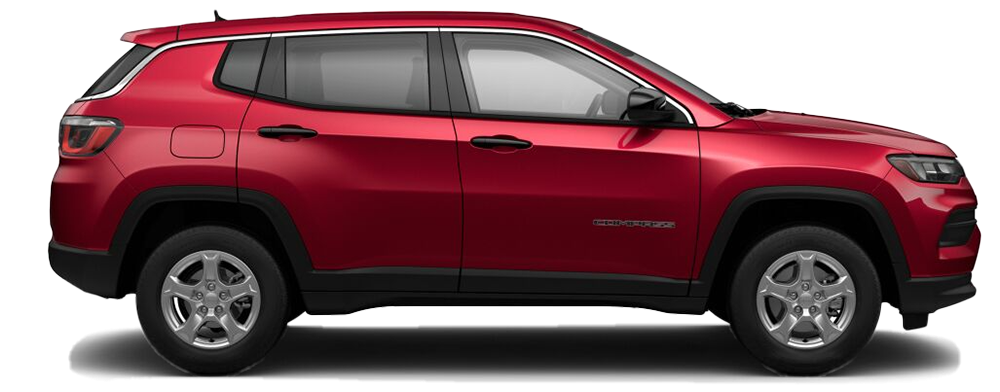
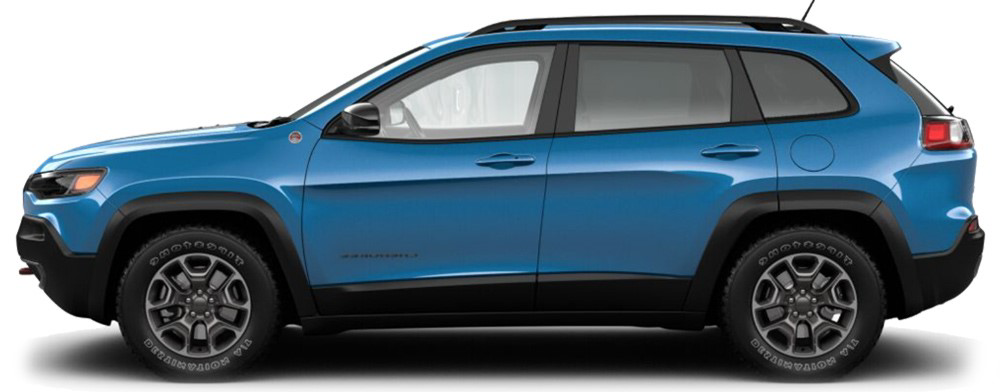
How do certain models within the Jeep lineup compare to one another? This is a question you may be asking yourself as you try to select your next SUV around Clarks Summit, Dickson City, or Dalton, PA. We’ve done a lot of the legwork for you here at Scranton Dodge Chrysler Jeep Ram to make your research process easier.
So, the following Jeep Compass vs. Jeep Cherokee comparison shines the spotlight on two of Jeep’s headline offerings. Which one is right for you, the Compass or the Cherokee? Read on to find out!

CARGO CAPACITY

MAXIMUM HORSEPOWER

TOUCHSCREEN SIZE
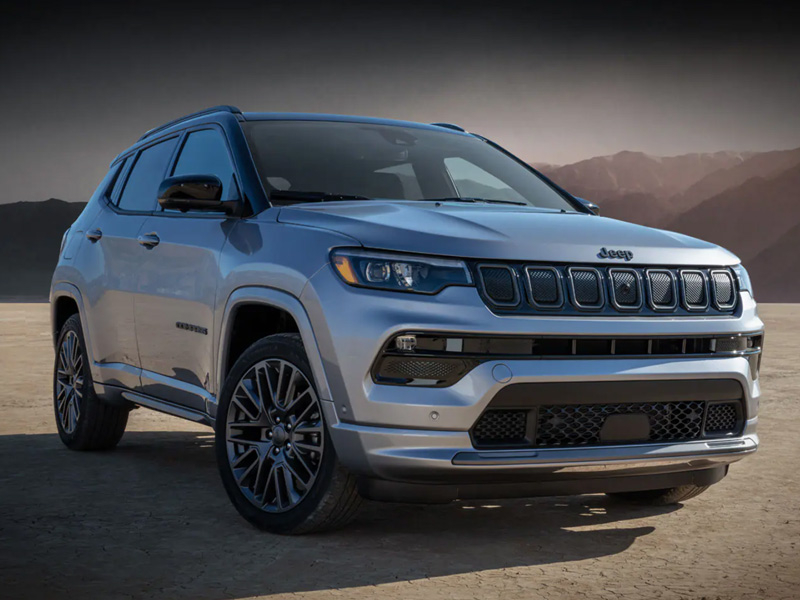
Space is the deciding factor for many families and individual drivers as they try to pick out their ideal SUV. Whether you need space for your growing family, your friend group, your adventure gear, or your everyday essentials, the Compass and the Cherokee will provide the room you need—and more.
The Cherokee is the larger of the two options with a wheelbase coming in at 106.6 inches and a 183.1-inch-long body. Conversely, the Compass checks in with a 103.8-inch wheelbase and a much shorter length measuring 173.4 inches.
While this contrast in structure often creates handling differences, it leaves seating dimensions alone! By offering 41.8 inches of front legroom and 38.3 inches of rear legroom, the Compass keeps up with the Cherokee, which offers 41.1 inches of front legroom and 40.3 inches of rear legroom.
The Jeep Cherokee tops the Compass in passenger volume by offering 128 cubic feet to the 100 cubic feet of the Compass. The cargo room is a different story, however:
- Jeep Compass Cargo (behind first/second row): 59.8/27.2 cubic feet
- Jeep Cherokee Cargo (behind first/second row): 54.7/25.8 cubic feet
So, in terms of size, it may come down to whether you want that extra cargo space afforded by the Compass or the extra second-row passenger room of the Cherokee!
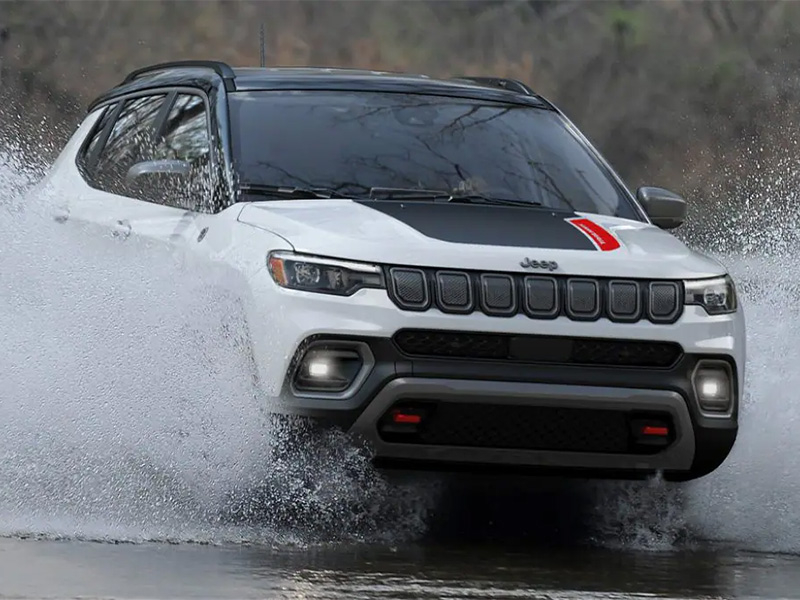
The famed Jeep capability can be seen in both the Compass and the Cherokee. Despite their relatively compact dimensions, each SUV can be used for towing, and each one will deliver an immediate and engaging on- and- off-road performance.
The single engine of the Compass is a 2.0L Turbo engine that produces 200 horsepower and 221 lb-ft of torque. When properly equipped, you can use your Compass to tow as much as 2,000 pounds.
At their base levels, these Jeeps offer similar capability with the Compass offering a bit more punch. Overall, the Cherokee offers the strongest engine of the pair. Explore its two engine options that flex impressive muscle. . .
- Standard 2.4L engine: 180 horsepower, 171 lb-ft of torque, and a 2,000-pound towing capacity
- Available 2.0L Turbo engine: 270 horsepower, 295 lb-ft of torque, and a 4,000-pound towing capacity
If you have a heavier towable toy to take along on your next camping trip or your next stay at a lake house, the Cherokee offers more brute strength.
One major draw to the Jeep brand is its vehicles’ ability to tackle tough turf. Both the Compass and the Cherokee will help answer your call to adventure thanks to their Trail Rated® Trailhawk trims! Wearing this badge indicates these SUVs’ expertise in the following areas:
- Traction
- Water Fording
- Maneuverability
- Articulation
- Ground Clearance
Their Selec-Terrain® Traction Management Systems provide added reassurance on bumpy trails or highway jaunts.
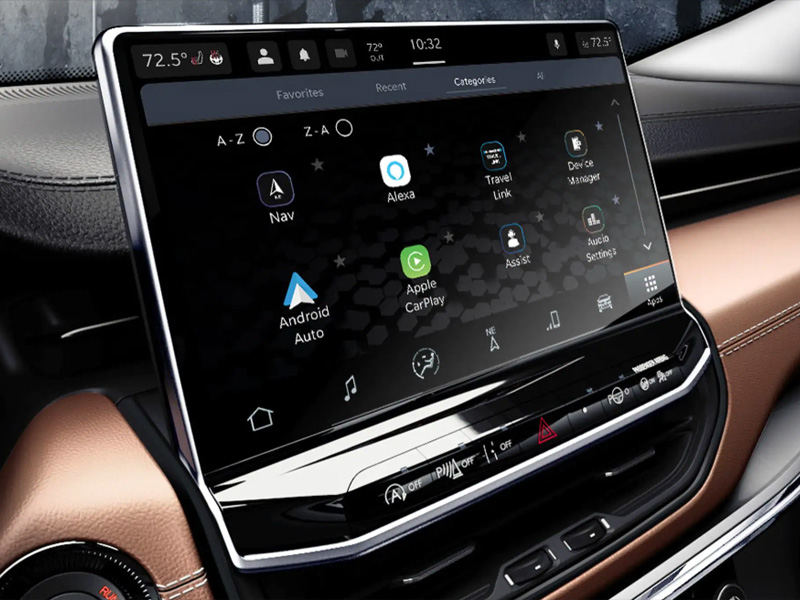
Technology can bring peace of mind to drivers. It can lead you home after a long day, it can tune you in to your favorite artist’s latest single, or it can help keep you out of harm’s way. Do the Compass and the Cherokee have the technology you desire?
The Cherokee sports a Uconnect® 4C NAV infotainment system that’s paired to an 8.4-inch display. The Compass, on the other hand, equips a Uconnect® 5 infotainment system with a 10.1-inch display—the largest in its class, in fact! Both screens are impressive, although the Compass’ display offers an elevated viewing experience.
The Cherokee also comes with a built-in navigation system, helping you return to civilization after exploring the great outdoors. With standard Apple CarPlay® and Android Auto™ in the Compass, you can use maps or your preferred directions app to lead you home.
Your safety is priority one in the Jeep Compass and the Jeep Cherokee. Both models share Jeep’s safety suite, especially these features:
- Forward Collision Warning with Active Braking
- Active Lane Management
- Blind Spot Monitoring with Rear Cross Path Detection
You’ll also find Adaptive Cruise Control with Stop and Go on either SUV, which helps take the edge off long post-adventure drives. However, it comes standard on the Cherokee, while it’s available on the Compass.
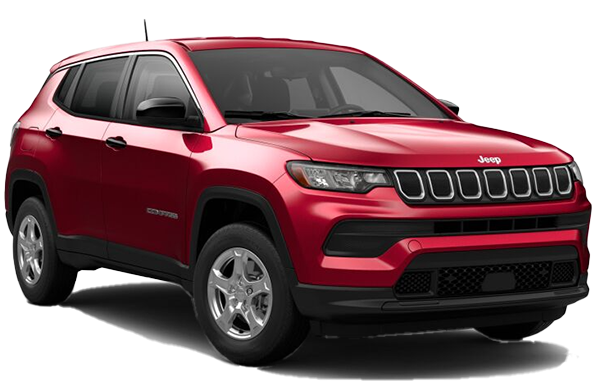
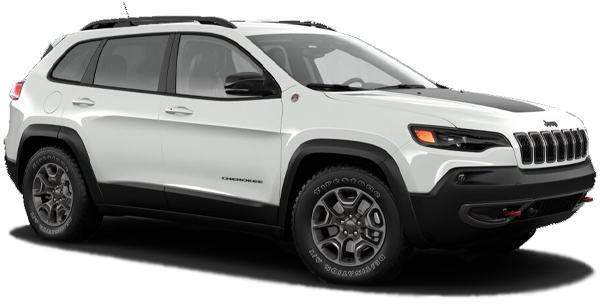
At the end of the day, the size of the Jeep you want, its performance platform, and its included technologies are choices you get to decide on your own. Both the Jeep Compass and the Jeep Cherokee excel when utilized as commuters or family options near Clarks Summit, Dickson City, and Dalton, PA.
Do you prefer to test drive them back-to-back for further insight? Contact us at Scranton Dodge Chrysler Jeep Ram!
All of the tools you need to move forward with experiencing a new Compass and Cherokee for yourself are conveniently available right here online.
Explore our extensive new inventory, receive an estimate on your trade-in, apply for credit or contact us to schedule your in-person test drive using the quick links here.
Shop Jeep Inventory Value Your Trade Apply for Financing Schedule a Test Drive




